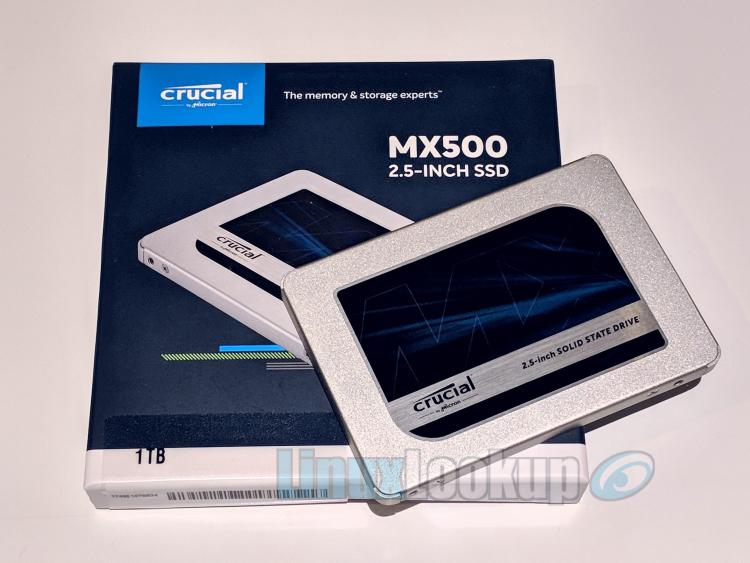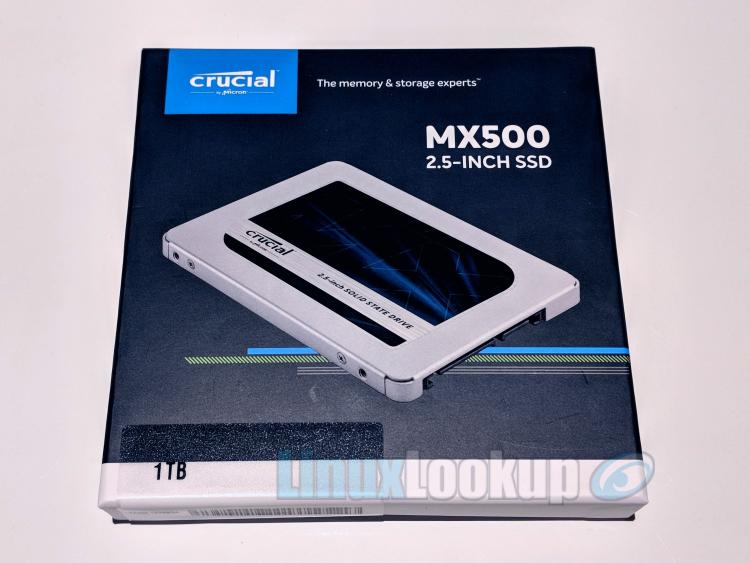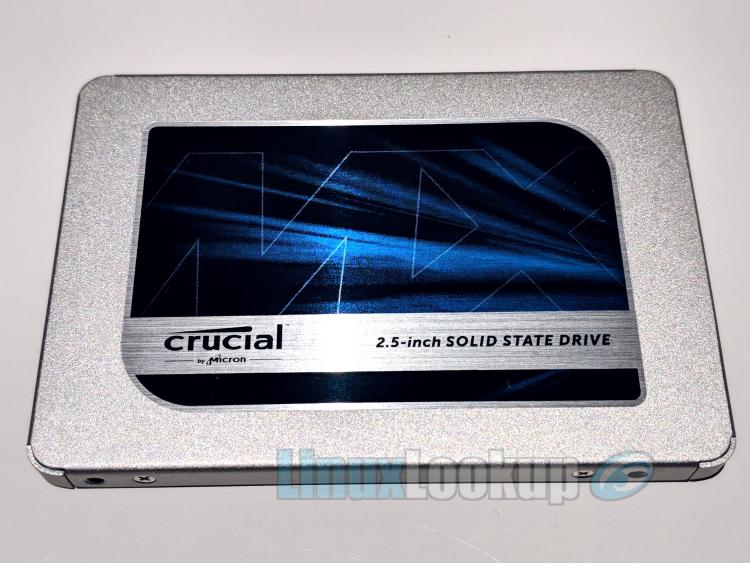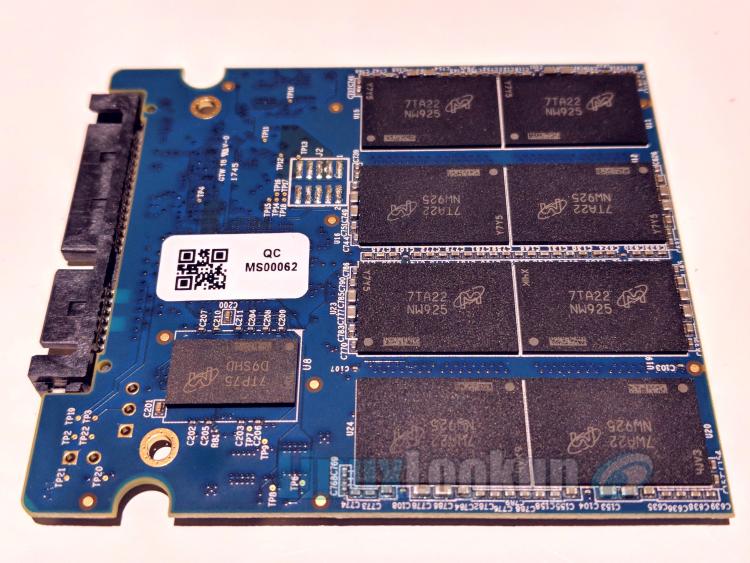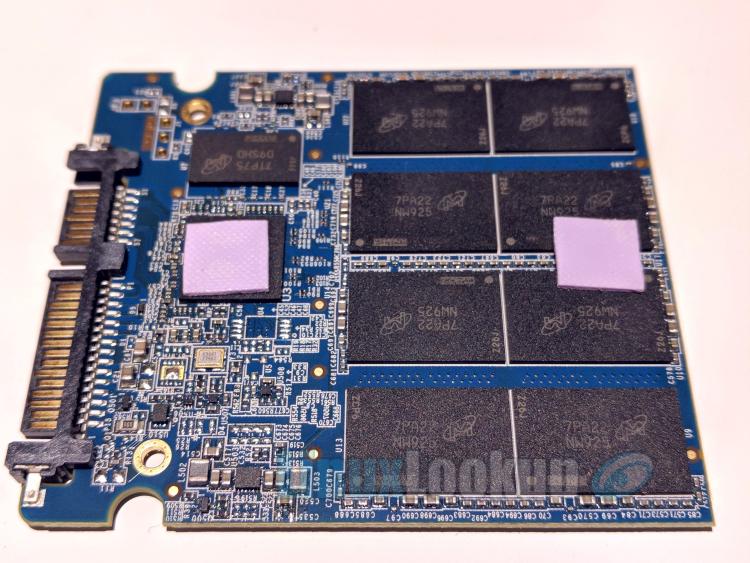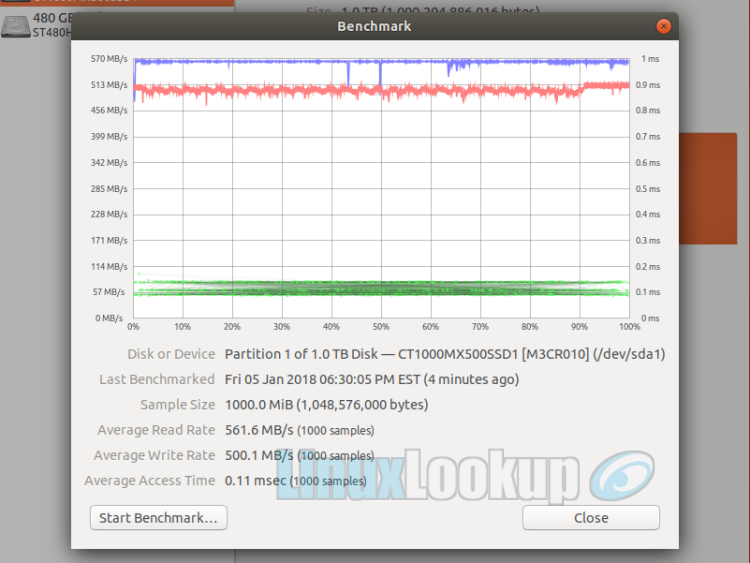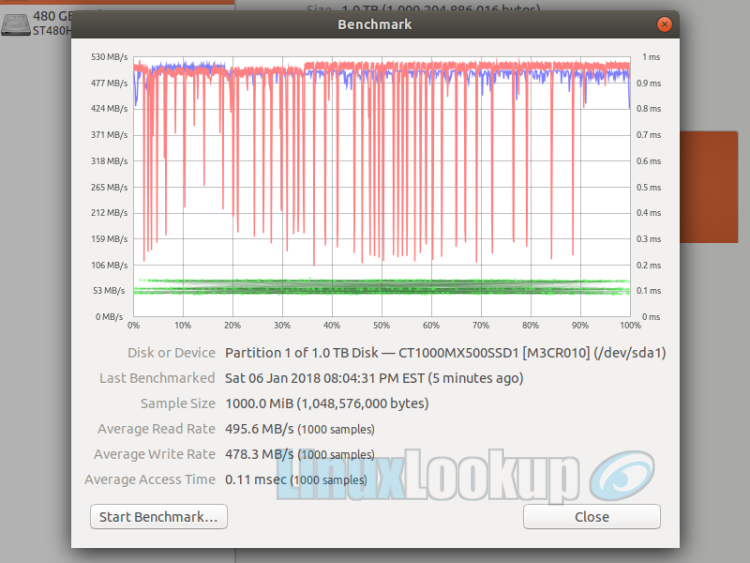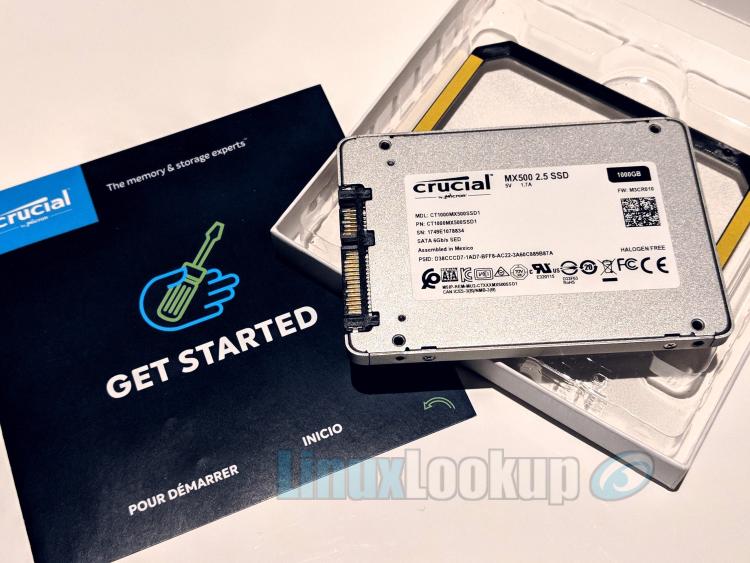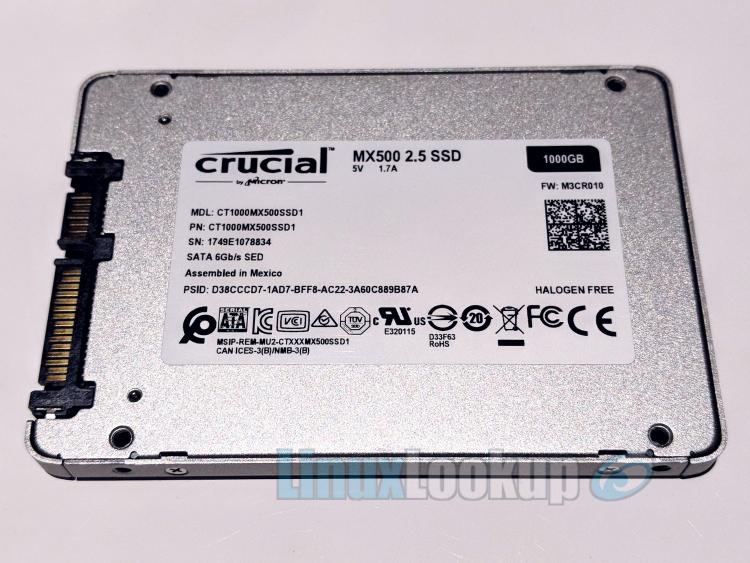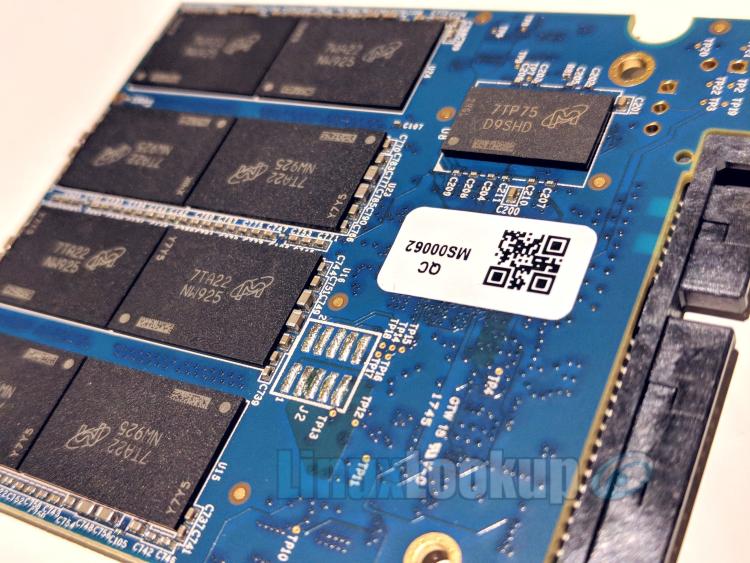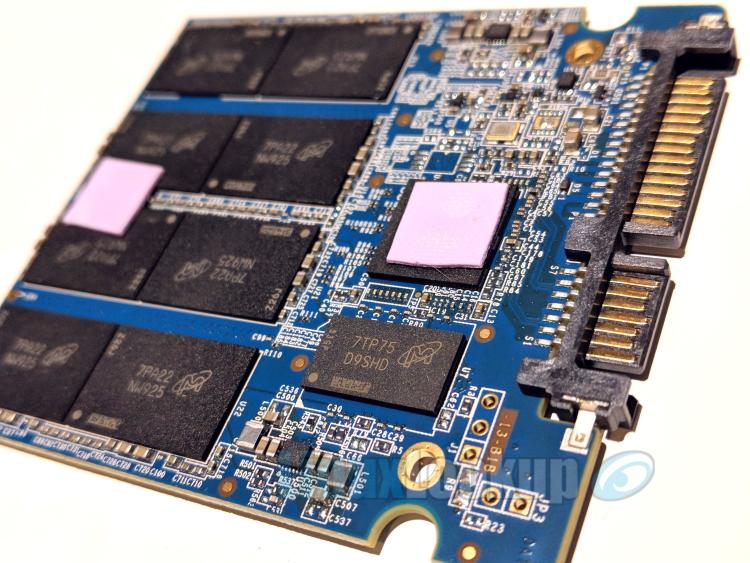Crucial MX500 1TB SSD Review
The MX500 is Crucial's first consumer Solid State Drive (SSD) to utilize Micron 2nd generation 3D TLC NAND Flash, a technology that not only improves on both performance and overall cost, but also promises larger capacities upward of 2TB.
In this review we're going to take a look at the newest addition to the MX series, the Crucial MX500 1TB SSD.
The Crucial MX500 SSD
The Crucial MX500 SSD is available in four different capacities, 250GB, 500GB, 1TB and an even larger 2TB model — retailing for $79.99, $139.99, $259.99 and $499.99 respectively.
There are two different form-factors to choose from; either a 2.5-inch 7mm to ensure compatibility with everything from Ultrabooks to Personal Computers, or the smaller M.2 Type 2280 for supported on-board connectors. Capacities up to 1TB are available in the M.2 form-factor.
Regardless of which drive capacity you choose, the performance rating across all Crucial MX500 models is quoted to deliver 560MB/s sequential read with 95,000 IOPS and sequential write performance up to 510MB/s with 90,000 IOPS.
Crucial's MX series has always been driven by a Marvell controller. Both past generation MX100 and MX200 preserved the Marvell 88SS9189 controller, where as MX300 internally utilized a Marvell 88SS1074 controller. This time around, the MX500 has switched over to a Silicon Motion SM2258 controller which we've seen used previously in Crucial's entry-level BX series drives.
According to Silicon Motion, the SM2258 is a high-performance SATA 6Gb/s SSD controller supporting 3D triple-level cell (TLC) NAND. With features such as advanced Direct-to-TLC and SLC Caching algorithms for optimal sustained performance, along with proprietary NANDXtend error-correcting code (ECC) technology, the SM2258 provides comprehensive data protection and enhances the endurance and retention of 3D TLC NAND.
The most significant hardware change on the MX500 is the inclusion of Micron 2nd Generation 64-layer 3D TLC NAND. This floating gate NAND is designed with CMOS Under the Array (CUA), which allows Micron to minimize the footprint of the die. At 59 square millimeters, it’s among the world’s smallest 256-gigabit die.
Viewing the printed circuit board (PCB) we noted two Micron 256Gbit dies, with 64-layer 3D TLC NAND distributed over 16 flash packages, 8 per side. Thus returning a 1TB capacity.
Some note worthy features included are NAND-integrated power loss immunity protects data-at-rest during unexpected power loss, without banks of capacitors. This means if your system suddenly shuts down, you keep all your saved work. Whilst the drive is designed to operate from 0C to 70C, Adaptive Thermal Protection intelligently adjusts NAND operations if internal temperature begins to reach the maximum specification and does so until returning to an acceptable level.
Also, for those security conscious folks, TCG/Opal 2.0-compliant self-encrypting drive (SED) features an AES-256 encryption engine, providing hardware-based, secure data encryption, with no loss of SSD performance.
Crucial products have an outstanding track record for reliability. Their Solid State Drive line-up has been tested over seven generations of drives. Previous models were backed by a three-year limited warranty, now with the introduction of the MX500, Crucial is once again offering a 5 five-year limited warranty on this particular drive.
The MX500 1TB model has a calculated arithmetic mean (average) time between failure of 360TB. This equals 197GB of writes per day for 5 years, yet another significant increase in endurance rating vs the previous generation MX300 1TB model.
Features
Highlight summary:
- Dynamic Write Acceleration
- NAND-integrated Power Loss Immunity
- Adaptive Thermal Monitoring
- TCG/Opal 2.0-compliant self-encrypting drive (SED)
- Hardware-based AES-256 encryption engine
- Static and dynamic wear leveling
- 5 year limited warranty
- Free shipping (Like all Crucial products)
Specifications
- Type: 2.5-inch
- Height: 7mm
- Flash Controller: Silicon Motion SM2258
- Flash Type: Micron 2nd Generation 64-layer 3D TLC NAND
- Serial ATA: Transfer rate 6Gb/s (backwards compatible with 3Gb/s)
- Temperature: Operating (0°C to 70°C) Non-operating (-40°C to 85°C)
- Acoustics: 0dB
- Mean Time To Failure: 1.8 million hours
- Drive Endurance: 360TB Total Bytes Written (TBW), equal to 197GB per day for 5 years
Performance
Performance testing was done under Ubuntu 17.10 (Artful Aardvark) using an ext4 file system. Factors affecting performance include: Capacity of the drive, interface of the host and overall system performance. Your results may vary.
Test System
- Processor: AMD Ryzen 7 1700X Eight-Core @ 3.40GHz (8 Cores / 16 Threads)
- Motherboard: GIGABYTE GA-AB350-Gaming-3
- Memory: 64512MB (64GB DDR4)
- OS: Ubuntu 17.10
- Kernel: 4.13.0-21-generic (x86_64)
- File-System: ext4
- Interface: SATA 6Gb/s
Our SSD benchmarking is performed in two stages. First we benchmark the drive while in a Fresh-Out-of-Box (FOB) state. This typically is how manufactures specify I/O performance because the drive has yet to endure any sustained workload and initial performance benchmarks from a FOB state will result in uncharacteristically high measurements.
To provide more accurate measurements we also precondition the drive to a Steady state before running our benchmark a second time. Steady state is achieved by issuing a Sanitize/Secure Erase on the SSD and then writing with sequential transfers twice that of it's capacity. Though this process takes several hours, the test results are more consistent.
Fresh-Out-of-Box (FOB) state performance results
Steady state performance results
The green points and connecting lines indicate the samples taken; these correspond to the right axis, showing access time, plotted against the bottom axis, representing percentage time elapsed during the benchmark. The blue line represents read rates, while the red line represents write rates; these are shown as access data rates on the left axis, plotted against percentage of the benchmark duration.
Below the graph, values are displayed for minimum, maximum and average read and write rates, also average access time.
Timings of device reads
This measurement is an indication of how fast the drive can sustain sequential data reads under Linux, without any filesystem overhead. Timing buffered disk reads: 1596 MB in 3.00 seconds = 531.37 MB/sec
Gallery
Conclusion
The Good - Pros- Utilizes Micron 2nd Generation 64-layer 3D TLC NAND
- Endurance rating has increased over previous generation
- TCG/Opal 2.0-compliant self-encrypting drive (SED)
- NAND-integrated power loss immunity
- Available up to 2TB capacity
- 5 five-year limited warranty
The Bad - Cons
- N/A
The Ugly - Issues
- N/A
The Verdict - Opinion
The Crucial MX500 1TB SSD delivers consistent performance and is a welcome improvement to the MX series. Thanks to Micron 2nd Generation 64-layer 3D triple-level cell (TLC) NAND, we're also seeing larger, more desirable capacity options at a value price point. Not to mention the return of a 5 year warranty!
